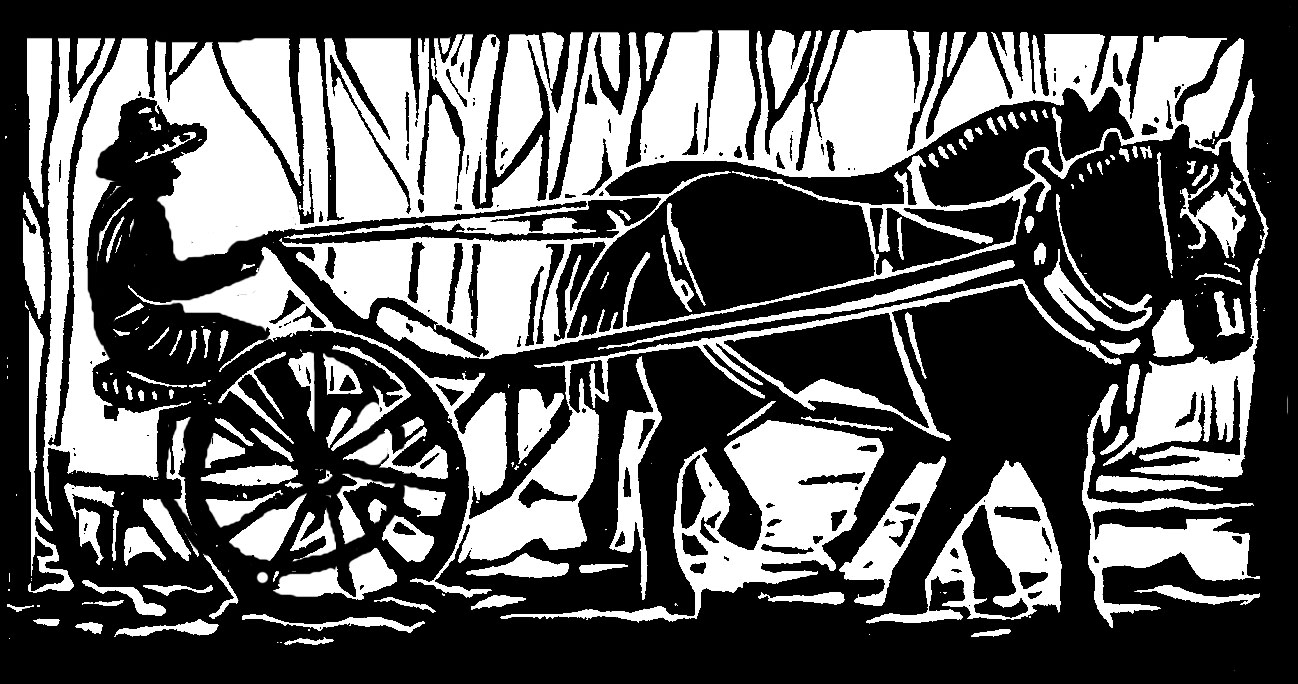Five years ago, my enthusiastic farming fellow convinced me that making maple syrup would be an ideal addition to our operation. It would be fun, exciting, new!
February and March, of course, would be the perfect time of year for another project, since we were rested up from the last garden season, and not completely submerged yet into the next one. Hauling sap would get the work horses in shape for plowing. Boiling sap would be a great use for the enormous pile of pine, mixed in with hardwood for our wood stove, that had been deposited in our driveway months ago, thanks to a friendly local professional tree-cutter.
Plus, said my fellow, we'll have a handy little money-making enterprise, to go along with our vegetables and herbs and apples and flowers.
The budget and exactly-how-much-energy-do-two-farmers-have committee, me, that would be, was somewhat skeptical, but we finally decided to invest in second-hand taps and buckets, and a second-hand pan. In the overhang of our woodshed, we rigged up an arch with cement blocks and mud caulking and a stovepipe. We fitted our old beat-up cart with a water trough, plastic, and plywood, for collecting the sap with our work horses. Near the barnyard, we clanged and banged and dropped the buckets, and we twanged and tossed the bucket covers, so the horses wouldn't worry about the scary new sounds of collecting sap.
Happily, from the beginning, our team of black Percherons didn't bat an eye at any of this new activity. They pulled that rattly, squeaky cart right up the hill, and waited patiently as we poured in our first full buckets of sap. It seemed miraculous, all that incredible sap, all that abundance from the trees and the world!
It still seems miraculous, five years later, and we have learned many things about making syrup, including: how to burn the pan; how to endlessly scrub and scrape the burn off; how to haul the pan to your neighbor's for soldering, after you've boiled one chamber too dry, and melted the old weld; how to fashion annoying, difficult hooks out of wire, after you've lost the clever, easy hooks that came with the taps; how long it takes a full trough of sap to ferment in the sun during an unexpectedly warm spell; and how our newer team of Belgian horses bat all their eyes and tuck all their tails and wish to gallop all the way up and down the hill with the terrifying sap cart.
But mostly sap gathering is an idyllic hour, when, every two or three days, we hitch up the horses and set out. Oh, the beautiful New England winter landscape, the horse harness jingling, the exquisite drip, drip, drip of the sap in a just emptied bucket! And oh, the sweet cold sap!
Then comes the rattle-splash down the hill, and the lighting of the sap fire, and the first bubble bubble bubble in the pan. That's pretty nice too. The sap fire is a good warm way to spend an extended time outdoors, just when you're feeling February-cabin-feverish.
Extended is the key word here, meaning hours upon hours upon hours, and we know just how long we can leave the fire and the pan before the smell of burning begins. Not long enough to eat supper, for example: we have our suppers on a tray outside by the fire. We also play board games outside by the fire, and we have homework and clarinet-playing sessions outside by the fire. We sample the sap becoming syrup, we listen to the radio, we write in our journals, we fix tools, we read books and magazines. We boil eggs in the sap, make sugar on snow, brew the most delicious tea in the world with sap. And we split pine wood. We tend the flames. We add sap and we add sap and we add sap.
But as the daylight begins to wane, the skeptical, sleepy farmer also begins to wane, and it is the enthusiastic, energetic farmer who is up until the wee hours, night after night, with the fun project. Still, it is awfully tasty, on the other end, to pour that delicious (local, sustainable!) syrup on our yogurt and pancakes and cornbread and ice cream.
And our most important maple syrup learning? No, we do not, in fact, have a handy little money-making enterprise. Instead, we have just the opposite: a fine appreciation of why maple syrup is so very delicious, and so very expensive. As we tally up our little take of eleven or twelve gallons a year, plenty for us, and for gifts too, we humbly bow down to all the stalwart and productive maple syrup makers of the world.
Originally published in the Monadnock Shopper News, February 18 -24, 2015

